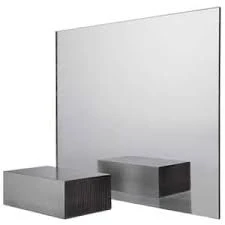

The Versatility of Blue Float Glass A Comprehensive Overview
Blue float glass is an increasingly popular choice in architecture and design, known for its aesthetic appeal and functional benefits. This type of glass is manufactured through the float glass process, where molten glass is floated on a bed of molten tin. This technique results in a smooth, uniform surface that is ideal for various applications. The unique blue hue adds a distinct character to structures and spaces, making it an attractive option for architects and designers.
One of the primary benefits of blue float glass is its ability to control natural light. The blue tint not only enhances the aesthetic quality of buildings but also helps in reducing glare. This is particularly beneficial in commercial settings where excessive sunlight can create discomfort for employees and customers alike. By filtering light to a certain degree, blue float glass creates a more comfortable indoor environment while still allowing sufficient illumination.
Another advantage of blue float glass is its energy efficiency. The color acts as a natural barrier, helping to maintain the temperature within a building. During hot summer months, blue float glass can reduce the amount of heat entering a building, thus decreasing the reliance on air conditioning systems and lowering energy bills. Conversely, in colder climates, it helps to retain warmth by minimizing heat loss. This dual functionality makes blue float glass not only aesthetically pleasing but also an environmentally friendly choice.
In addition to its thermal properties, blue float glass is also valued for its safety features. When tempered, it becomes significantly stronger than regular glass and is less likely to shatter upon impact. This is essential in high-traffic areas and large commercial structures where the safety of occupants is a top priority. Furthermore, if shattered, tempered glass breaks into small, blunt pieces rather than sharp shards, reducing the risk of injury.

The application of blue float glass is widespread, encompassing a variety of sectors including residential, commercial, and industrial constructions. In residential settings, it is often used for windows, doors, and facades, adding elegance and a modern touch to homes. Architects frequently utilize blue float glass in office buildings and skyscrapers, where it improves the overall aesthetic while providing functional benefits. Additionally, it is used in furniture design, such as tables and cabinetry, allowing designers to create a cohesive aesthetic throughout interior spaces.
Blue float glass is also a highly customizable material. Manufacturers offer various shades and finishes, allowing designers to select the perfect hue to suit their projects. This versatility is essential in contemporary design, where the ambiance and atmosphere of a space can greatly impact its utility and enjoyment. Furthermore, blue float glass can be treated with coatings to enhance its properties, such as anti-reflective, low-E, or UV protection, adding even more value to its use.
The sustainable aspect of blue float glass should not be overlooked. As society becomes increasingly focused on eco-friendly practices, using materials that contribute to energy efficiency and resource conservation has become paramount. Float glass can be recycled and repurposed, reducing overall waste. By choosing blue float glass, designers and builders are making a conscious decision to prioritize sustainability while also achieving their aesthetic goals.
In conclusion, blue float glass is a multifaceted material that combines beauty, functionality, and sustainability. Its distinctive color offers visual appeal, while its energy-efficient and safety features enhance its utility in a variety of applications. As architects and designers continue to push the boundaries of modern construction, blue float glass will undoubtedly play a pivotal role in shaping the built environment. In an era where design must meet both aesthetic and practical needs, blue float glass stands out as a premier choice for innovative and sustainable solutions. Whether used in a high-rise building or a cozy home, this material is sure to leave a lasting impression.